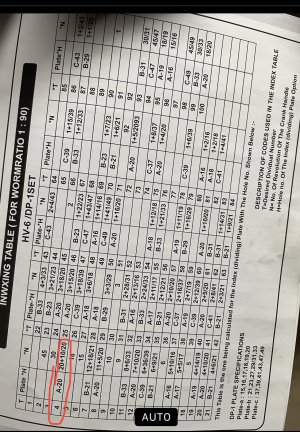- Joined
- Nov 17, 2017
- Messages
- 1,525
In any event, instead of cutting try measuring !!
Take a piece of square stock and mount it on the rotarty table.
a) rotate table until one side measures(trams?) flat with a dial indicator
b) set RT dials to zero
c) rotate table another 90º
d) run dial indicator along edge and see how much error there is from "just using the dials"
e) repete (d) 3 more times
You now have a gauge of how accurate the RT dials are.
Take a piece of square stock and mount it on the rotarty table.
a) rotate table until one side measures(trams?) flat with a dial indicator
b) set RT dials to zero
c) rotate table another 90º
d) run dial indicator along edge and see how much error there is from "just using the dials"
e) repete (d) 3 more times
You now have a gauge of how accurate the RT dials are.


